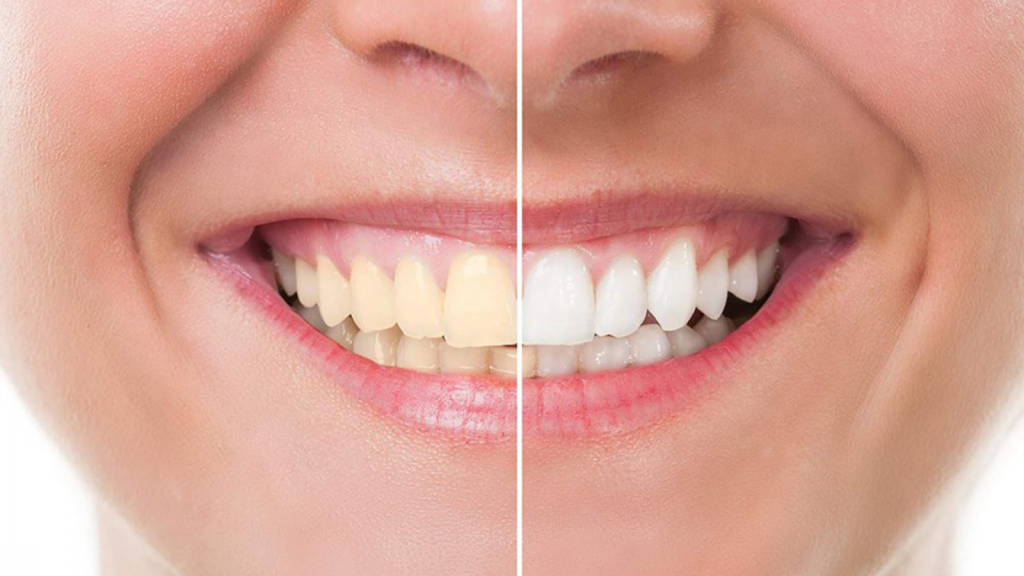
A bright smile is something almost everyone wants. It not only boosts confidence but also makes a strong first impression. But let’s be honest—most of us don’t have the time (or sometimes the budget) to visit a dentist for professional whitening treatments. That’s where safe, at-home teeth whitening methods come in.
The internet is filled with quick-fix tricks and DIY hacks, but not all of them are safe or effective. Some can even damage your enamel or cause long-term sensitivity. So, the real question is: how can you whiten your teeth at home safely without harming your oral health?
In this guide, we’ll go step by step into what really works, what to avoid, and how you can maintain a naturally whiter smile.
Why Do Teeth Become Stained in the First Place?
Before we jump into whitening methods, let’s understand why teeth lose their brightness. Stains can be caused by:
- Food and Drinks – Coffee, tea, red wine, and dark-colored sauces are major culprits.
- Smoking and Tobacco – Nicotine and tar stick to teeth, leaving yellow or brown stains.
- Poor Oral Hygiene – Infrequent brushing or flossing allows plaque and stains to build up.
- Aging – Over time, enamel thins and dentin (the yellow layer underneath) becomes more visible.
- Medications – Certain antibiotics and treatments can discolor teeth.
Knowing the cause can help you choose the right whitening method.
Safe At-Home Teeth Whitening Methods
1. Whitening Toothpaste and Mouthwash
Whitening toothpaste doesn’t bleach your teeth, but it can gently polish away surface stains. Look for brands that contain mild abrasives and safe whitening agents like hydrogen peroxide in low concentrations. Mouthwashes with whitening ingredients can also help maintain results.
Tip: Use whitening toothpaste once or twice a day, but avoid over-brushing, which can wear down enamel.
2. Whitening Strips and Gels
Over-the-counter whitening strips and gels are popular for a reason: they work. These products usually contain peroxide, which breaks down stains.
- Strips are thin, flexible pieces coated with a whitening gel that you apply directly to teeth.
- Gels can be painted onto the teeth using a small brush.
Safety Check: Always follow the instructions. Leaving strips or gels on for too long can cause sensitivity or gum irritation.
3. Custom Whitening Trays (At-Home Kits)
Some dental offices provide custom-made trays for at-home use. These trays hold whitening gel evenly across your teeth. Though they may cost more than drugstore strips, they are safer and often more effective because they fit your teeth perfectly.
4. Natural Whitening Options (Used Carefully)
Some people prefer natural remedies. Here are a few that can help if used in moderation:
- Baking Soda: Acts as a mild abrasive that can scrub away stains. Mix a small amount with water and use it like toothpaste once or twice a week.
- Hydrogen Peroxide Rinse: Dilute it with equal parts water and swish around your mouth occasionally. Never swallow it and don’t use it daily, as it may cause sensitivity.
- Oil Pulling: Swishing coconut oil around your mouth for 10–15 minutes may help reduce bacteria and plaque, which can lead to a brighter smile over time.
⚠️ Important: Avoid using lemon juice, vinegar, or other acidic substances directly on teeth. These can erode enamel permanently.
5. Eating for Whiter Teeth
Believe it or not, your diet can naturally help keep your teeth white.
- Crunchy fruits and vegetables like apples, carrots, and celery act as natural scrubbers.
- Cheese and yogurt provide calcium, which strengthens enamel.
- Drinking plenty of water helps wash away food particles before they stain.
Things You Should Avoid
Not every DIY hack online is safe. Here are a few you should stay away from:
- Charcoal Powders: They may look trendy, but many are too abrasive and can wear down enamel.
- Lemon Juice or Vinegar: Extremely acidic and damaging.
- Excessive Baking Soda: While safe in small amounts, daily use can scratch enamel.
Tips to Maintain White Teeth After Whitening
- Brush at least twice daily with fluoride toothpaste.
- Floss daily to prevent plaque buildup between teeth.
- Limit staining drinks like coffee, tea, and soda—or use a straw to minimize contact.
- Rinse your mouth with water after eating or drinking dark-colored foods.
- Schedule regular dental checkups to catch problems early.
When to See a Dentist
If you experience constant sensitivity, gum irritation, or if home remedies don’t work, it’s best to consult a dentist. Professional treatments are stronger, faster, and done under expert supervision, which makes them safer.
Final Thoughts
Whitening your teeth at home safely is possible with the right methods. Stick to proven products like whitening toothpaste, strips, or dentist-approved trays. Natural remedies can be used in moderation, but avoid harsh acids and abrasives that can cause more harm than good.
Remember, a healthy smile is more than just a white smile. Consistent oral hygiene and mindful eating habits will keep your teeth bright and strong in the long run.
Frequently Asked Questions (FAQs)
1. How long does it take to whiten teeth at home?
Most whitening strips and gels show results within one to two weeks. Natural remedies may take longer and usually provide more subtle changes.
2. Is it safe to use baking soda daily for teeth whitening?
No, daily use can wear down enamel. Stick to once or twice a week.
3. Do whitening strips damage enamel?
When used correctly and not excessively, whitening strips are generally safe. Overuse, however, can cause sensitivity and enamel weakening.
4. Can yellow teeth become white again?
Yes, but it depends on the cause. Surface stains can usually be removed, but deeper discoloration from aging or medication may require professional treatment.
5. What’s the safest at-home whitening method?
Dentist-approved whitening trays or over-the-counter strips (used as directed) are considered the safest and most effective options.


